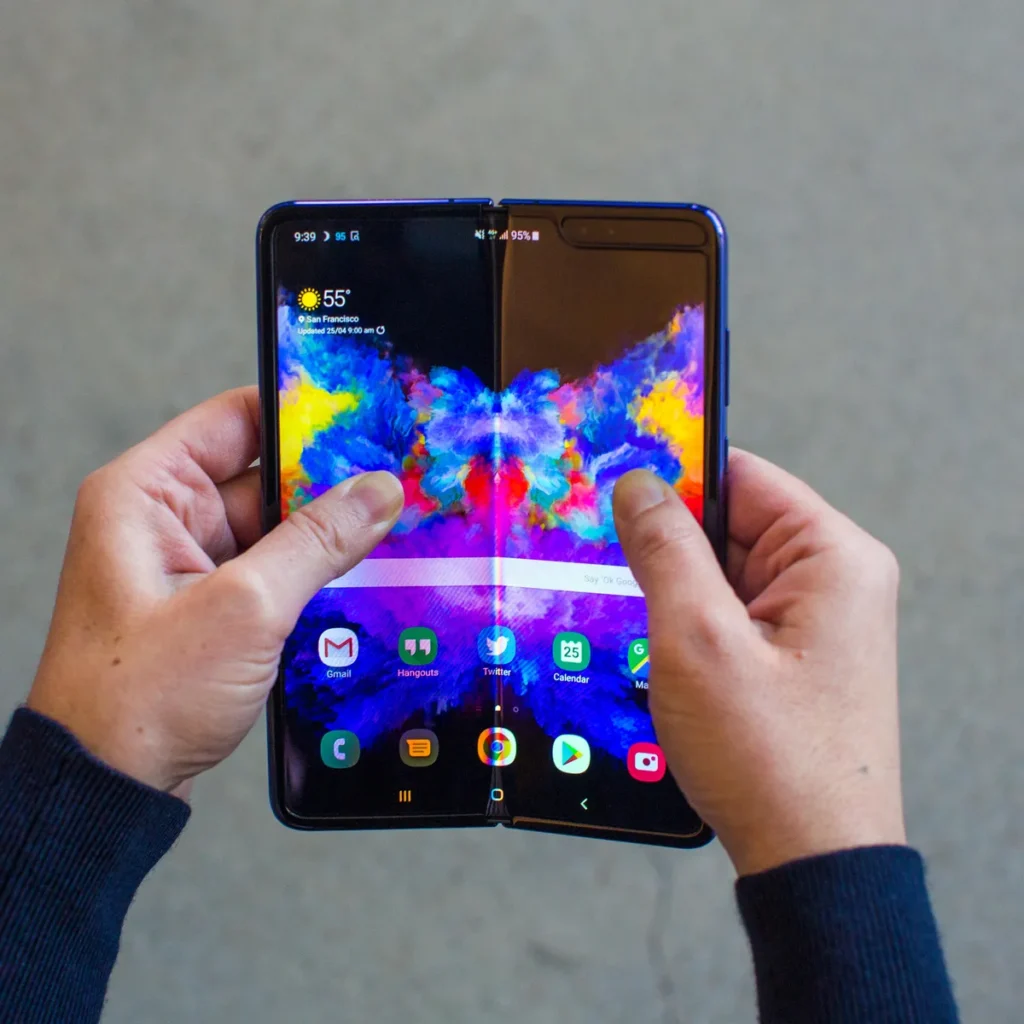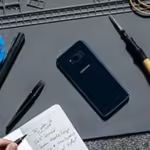Samsung has been at the forefront of foldable screen technology introducing a range of devices that feature innovative foldable displays. However a common question that arises is whether these foldable screens are made from plastic or another material. In this article we’ll delve into the specifics of Samsung’s foldable screens exploring their construction materials used and the advantages and challenges associated with them.
Understanding Foldable Screen Technology
Before diving into the materials used in Samsung’s foldable screens it’s essential to understand the technology behind them. Foldable screens are a significant advancement in display technology allowing smartphones to have larger screens that can be folded to fit in a pocket. This technology involves several complex layers each contributing to the overall functionality and durability of the screen.
Key Components of Foldable Screens
- Flexible Display Panel: The core of any foldable screen is the flexible display panel. This panel must be able to bend and fold without breaking or losing its functionality.
- Protective Layers: To ensure durability the flexible display panel is covered with protective layers that shield it from physical damage.
- Hinge Mechanism: The hinge mechanism allows the screen to fold and unfold smoothly. It must be robust yet flexible to support the bending motion of the screen.
- Cover Display: Many foldable devices have a cover display that remains visible when the device is folded. This display needs to be durable and responsive to touch inputs.
The Materials Behind Samsung’s Foldable Screens
Samsung has used various materials in its foldable screens and understanding these materials helps answer the question of whether the screens are made from plastic.
Flexible AMOLED Displays
Samsung’s foldable screens use AMOLED (Active Matrix Organic Light Emitting Diode) technology. AMOLED displays are known for their vibrant colors, high contrast ratios and energy efficiency. For foldable devices Samsung has adapted AMOLED technology to be flexible.
- Organic Light Emitting Diodes (OLEDs): The individual pixels in an AMOLED display are made from organic materials that emit light when an electric current passes through them. These materials are inherently flexible which is crucial for foldable displays.
- Flexibility: The flexibility of AMOLED displays is achieved by using thin flexible layers of organic materials. These layers are designed to bend without breaking, allowing the display to fold.
Plastic vs. Glass
A key question is whether the foldable screens are made from plastic or glass. The answer is a combination of both but primarily plastic materials are used for certain components.
- Plastic Layers: The outermost layer of Samsung’s foldable screens is typically a plastic material. This plastic layer is designed to be flexible and durable allowing the screen to fold without cracking. Plastic is also lightweight which is beneficial for mobile devices.
- Ultra-Thin Glass (UTG): In recent models Samsung has incorporated ultra-thin glass (UTG) in their foldable screens. UTG is a type of glass that is much thinner than traditional glass but retains many of its properties such as scratch resistance and a smooth feel. This glass is used to provide a more premium feel and added durability to the foldable screen.
Protective Coatings and Layers
In addition to the primary materials Samsung’s foldable screens include several protective coatings and layers:
- Protective Films: To safeguard the screen from scratches and damage Samsung applies protective films over the AMOLED display. These films are often made from plastic or polymer materials and are designed to be flexible.
- Durability Enhancements: Samsung has developed various technologies to enhance the durability of its foldable screens including special coatings that improve scratch resistance and reduce the risk of damage from daily wear and tear.
Advantages and Challenges of Using Plastic in Foldable Screens
The use of plastic and other flexible materials in foldable screens offers several advantages but also presents challenges.
Advantages
- Flexibility: Plastic materials are inherently more flexible than glass allowing the screen to bend and fold without breaking.
- Lightweight: Plastic is lighter than glass contributing to the overall lightweight design of foldable devices.
- Cost-Effectiveness: Plastic materials can be less expensive to produce compared to glass which can help reduce the cost of manufacturing foldable devices.
Challenges
- Scratch Resistance: Plastic is generally less scratch-resistant than glass. Samsung addresses this challenge by applying protective films and coatings but users should still handle their devices with care.
- Durability: While plastic is flexible it can be less durable than glass in terms of long-term wear. Samsung has made significant advancements in improving the durability of its foldable screens but plastic components can still be susceptible to damage over time.
- Premium Feel: Some users prefer the premium feel of glass over plastic. Samsung has responded to this by integrating ultra-thin glass in its latest foldable devices providing a more premium touch experience.
Samsung’s Foldable Phones: A Material Overview
Let’s take a closer look at how these materials are used in specific Samsung foldable models.
Samsung Galaxy Fold Series
- Galaxy Fold: The original Galaxy Fold featured a plastic foldable display with a protective polymer layer. Samsung used this design to create a device that could be folded open like a book.
- Galaxy Fold 2: The Galaxy Fold 2 improved upon the original design by incorporating ultra-thin glass over the foldable AMOLED display enhancing the durability and premium feel of the screen.
- Galaxy Fold 3: The Galaxy Fold 3 continued to use ultra-thin glass in the main display and included additional protective layers to improve the device’s resilience.
Samsung Galaxy Z Flip Series
- Galaxy Z Flip: The original Galaxy Z Flip used a plastic foldable display with a protective layer. The device folded vertically similar to a traditional flip phone.
- Galaxy Z Flip 3: The Z Flip 3 retained the plastic layer but improved the overall durability and user experience with a larger cover display and enhanced hinge mechanism.
- Galaxy Z Flip 4: The Z Flip 4 continued to use plastic in its foldable display while integrating improvements in performance and durability.
Future Developments in Foldable Screen Technology
As foldable screen technology continues to evolve we can expect further advancements in materials and design. Samsung and other manufacturers are actively researching new materials and techniques to enhance the flexibility, durability and performance of foldable displays.
Potential Material Innovations
- Advanced Glass Technologies: Future developments may include even more advanced forms of glass that combine flexibility with the durability of traditional glass.
- New Polymers and Composites: Researchers are exploring new polymers and composite materials that could offer improved scratch resistance and durability for foldable screens.
- Enhanced Protective Coatings: Innovations in protective coatings may provide better resistance to scratches and other forms of damage further improving the longevity of foldable devices.
Conclusion
Visit my website to discover the latest advancements in Samsung’s foldable screens, which are primarily made from flexible plastic materials. With innovations in ultra-thin glass technology, these devices offer improved durability and a premium feel. The combination of these materials allows Samsung to provide foldable devices that merge the convenience of a compact phone with the expansive display of a tablet.
While plastic materials enable the flexibility and lightweight design of foldable screens they do present challenges such as reduced scratch resistance and long-term durability concerns. Samsung continues to address these challenges with protective coatings, improved materials and ongoing research into new technologies.



